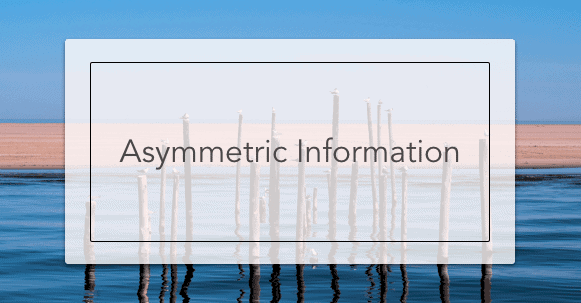The concept of Asymmetric Information centers around a situation in which there is unequal knowledge between each party to a transaction, that one party has better information than the other party. This type of asymmetry creates an imbalance in a transaction.
There are two types of asymmetric information – adverse selection and moral hazard.
Adverse Selection
Adverse selection describes circumstances in which either buyers or sellers have information that the other group does not have. In these cases, when these two groups are informed to different degrees, which creates asymmetric information.
The problem with asymmetric information, where one party has more information than another, occurs before the transaction takes place/pre-contractual problems. Used car owners have more information than they disclose while selling their cars. The people seeking insurance are more likely to need insurance, which means that the decision-maker usually has a poor selection.
Solutions to Adverse Selection
We need to produce cheaper information (in the financial sector – companies need to disclose information). Companies are required to follow standard accounting principles, the presence of rating firms, the disclosure of information, collateral and net worth requirements. For example, blogging, which can be considered to be a new source of cheap information has reduced the role of insider information by preventing people in power from withholding financial information from the general public.
Moral Hazard
Moral hazard is a situation in which a party is more likely to take risks because the costs that could result will not be borne by the party taking the risk. This problem with asymmetric information takes place after the transaction. For example, a person with insurance against automobile theft may be less cautious about locking their car because the negative consequences of vehicle theft are now (partially) the responsibility of the insurance company. Another example can be individuals on welfare benefits; they may be less likely to look for employment than if there were in a situation where they didn’t have any benefits.


Asymmetric information phenomenon must be considered by the consumers or end users at the time of decision making because marketeers and advertising agencies can be opportunistic and clever enough for deceptive marketing and promotion of consumer goods (FMCGs) and industrial goods.
My context is the reduction of risk faced by poor communities in the face of the increasing frequency and intensity of natural hazards (disasters). They are in desperate need of insurance but face poor distribution of information and lack of suitable insurance products. Is the former asymmetric knowledge market failure and the latter possibly a result of monopolistic power market failure or a missing market? Thanks